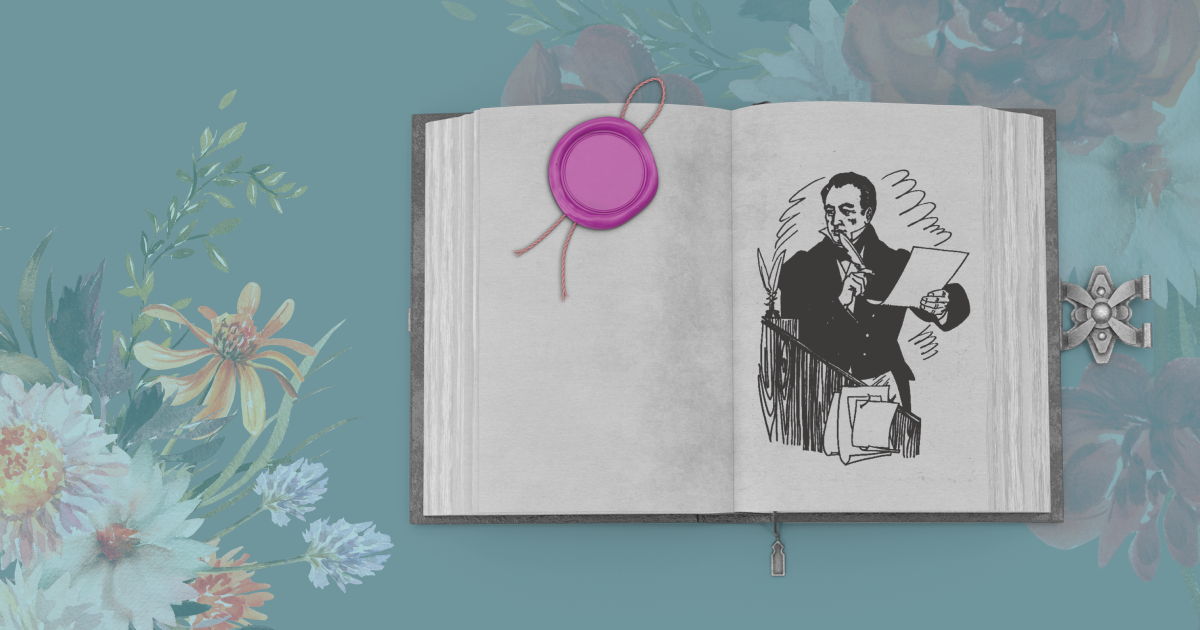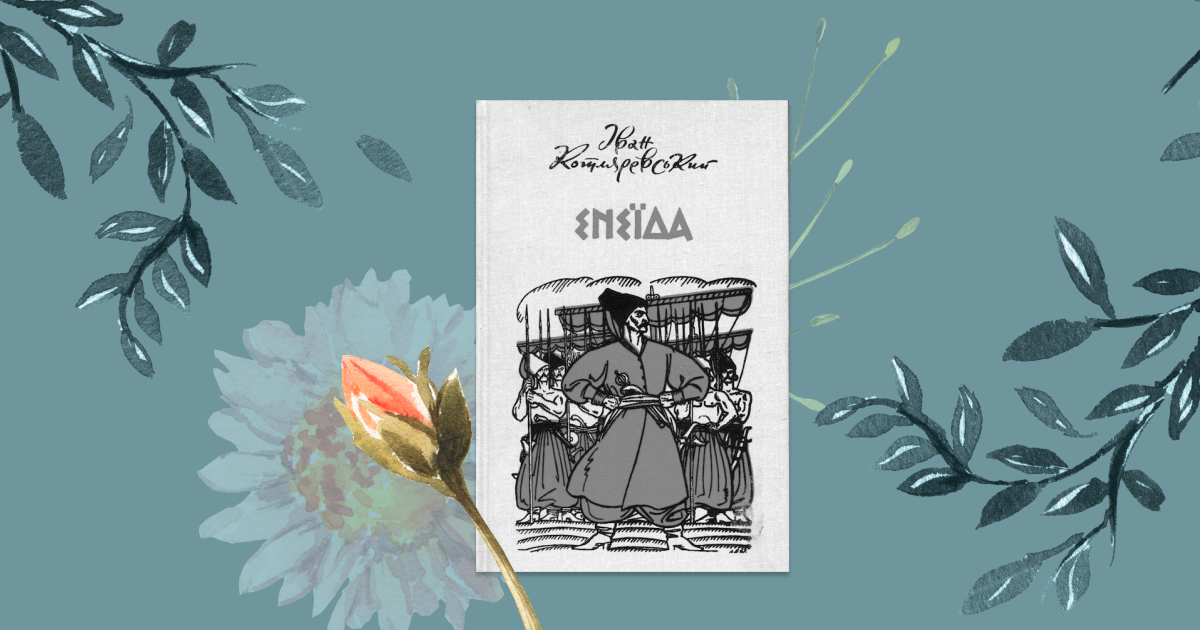Connecting the dots: Ukrainian writer Ivan Kotliarevskyi in the European context

Very few features of Ukrainian culture are known abroad, except for its Soviet-crafted simplified reading. Take, for instance, the all-popular Carol of the Bells, developed from the Ukrainian song «Shchedryk». The Soviet Union was a bit reluctant to highlight this, given that Shchedryk celebrates Christmas, against which the Communist party was waging war. Despite the recent Ukrainian push to make Carol of the Bells’ genealogy more visible, we are still far removed from wide acclaim.
After all, it is no wonder that Ukrainian culture is underrepresented overseas. Over the first half of the 20th century, Ukraine was a major battlespace. Let’s get a rough figure.
Ukrainian historian Oleksandr Laver calculated that 3.4 million Ukrainians died between 1900-1924 due to various armed conflicts. The Holodomor, the Stalinist man-made famine, caused excess mortality of 3.5-4.5 million people in Ukraine. In 1936-1937, during the so-called «Great Purge», 123 thousand residents of Ukraine were executed, with many more imprisoned or deported. Some 9 million Ukrainians, including Ukrainian Jews, died due to the Second World War.
Famine followed the war because the Kremlin decided to send Ukrainian agricultural products to France and Eastern European countries. Unfortunately, there is no good data on how many people died at the time, but the best guesstimates are in the hundreds of thousands. Therefore, exogenous reasons generated roughly 17 million premature deaths.
Imagine how many of those people could have become musicians, artists or filmmakers who would have inscribed their names into Ukrainian and world culture.
Therefore, it is imperative that Ukraine should cherish the culture it has and promote it. In doing so, we should not fetishise the assumed uniqueness but instead, position the Ukrainian experience in a broader context. Ivan Kotliarevskyi serves as a perfect testing ground for that purpose.
Who’s that?
Ivan Kotliarevskyi is often credited as a founder of modern Ukrainian culture. He was born into a Ukrainian noble family in 1769, around the time when the Russian empire effectively dismantled the little autonomy Ukrainian Cossacks still enjoyed. In his life, Kotliarevskyi followed a path typical for an aristocrat in the Russian empire: theological seminary, time in the army, and then civil service. However, in his mid-20s, he started to work on a major piece of writing which was soon to become one of the first-ever texts to be published in the modern Ukrainian language.

Aeneid’s travesties as a subgenre
It is how Eneida of Kotliarevskyi came into being. This piece modifies a monumental work from Roman literature, Virgil’s Aeneid. Most European educational institutions included this poem in curricula during the Middle Ages and the modern era. By reading it, students mastered Latin. Virgil’s Aeneid was part and parcel of the literary canon. To become a member of the educated elite, one was supposed to be knowledgeable about the Aeneid.
This happened not only in Western Europe but also in Ukraine. Proof of this is the presence of Virgil in the curriculum of the Kyiv Collegium in the middle of the 17th century, which was the leading educational institution at that time in Ukraine. Its rector Feofan Prokopovich wrote a treatise called «De arte poetica», in which he investigates the phenomenological origins of art, utilising the works of Virgil.
In other words, the ancient Roman poet enjoyed popularity in the Kyiv academic environment. Graduates from this centre were instrumental in creating other Ukrainian educational institutions. At least one alumnus of the Academy taught in the Poltava Theological Seminary in the 1780s when Kotlyarevskyi studied there. According to memoirs, the writer learned Latin and French when in the seminary.
Virgil's poem was central to the formation of many European national literatures. For example, Portuguese poet and dramatist Luis de Camoinche, in the 16th century, modelled the poem Lusiades on the Aeneid. Lusiades glorifies the Portuguese Empire and is still considered the most critical work of Portuguese epic literature. The Spaniard Alonso de Ercilla y Zuniga wrote a similar work in which he glorified the colonisation of Chile. The Russian Mikhail Kheraskov glorified in the poem Rosiyada the capture of the Kazan Khanate, the conquest of which is the launch pad for Russia’s imperial trajectory. However, these works are not travesties. Instead, having their own agendas, they instrumentalise Virgil’s scheme: a long sea voyage in which actual historical events are mixed with mythology and the struggle of the gods.
It was later, only in the 17th century, when the tendency to produce Aeneid travesties took hold on the European continent. The pioneer in this field was the Italian Jean-Baptiste Lalli: writing in Italian, he combined the divine plot of the ancient Roman poem with contemporary Italian life. Subsequently, the Frenchman Paul Scarron travestied the Aeneid. With the help of humour, he questioned authorities and hierarchical social relations. After Scarron, this subgenre began to flourish in Europe because the original Roman poem was familiar to the elites of all European societies.
Similar texts appeared in England, Germany and eventually Austria, the latter happening already during Kotliarevsky’s life. In 1786, the Austrian poet Alois Blumauer completed his travesty in which he criticised the Catholic clergy. Right after that, Nikolai Osipov, a Russian, utilised Blumauer to produce a Russian travesty of the Aeneid.
Ivan Kotliarevskyi, in turn, uses Osipov’s work to create his own "Aeneid". However, this only applies to the first three parts, which Kotliarevskyi was quick to pen. The following three parts instead were constructed upon the French translation or the Latin original of Virgil. Work on them proceeds slowly and is completed only towards the end of the writer's life.
Kotlyarevsky populates Virgil’s narrative with Ukrainian Cossacks and other related characters; the poem is filled with Ukrainian cuisine and traditions. He also includes references to events from the Cossack history now and then. Thus, literary critic Tamara Gundorova considers this travesty both an anti-imperial «encyclopedia of ethnonational life» and a pro-imperial kitsch that depicts Ukrainian life purely comedically. One way or another, Kotlyarevsky is part of the pan-European transition from classicism to romanticism through the travesty of ancient literature.

Moskal the Magician: ad fontes
Later, Kotlyarevsky tried establishing a theatre in his hometown of Poltava. He wrote a few plays for this purpose. A comedy called «Moskal the Magician» is of particular interest for our purposes here. A brief outline of the play:
Tetiana is the wife of a trader who is returning from the Crimea. The petty bureaucrat Fintik arrives from a town nearby to visit Tetyana. He flirts with Tetiana when a Russian soldier enters the house. The soldier has received an order to spend the night at this house. Tetyana refuses to feed the soldier. The soldier pretends to go to sleep. Tetiana and Fintik discuss what to have for dinner while the soldier overhears. Tetiana's husband, Mykhailo, comes home. Fintik hides. The soldier pretends to be awoken. He uses his knowledge about Fintik to blackmail Tetiana under the guise of «magic» and forces her to feed him and Mykhailo.
Literary critic Yevhen Nakhlik has proven that this plot has been «migrating» between national works of literature. He lists a number of similar French plays, some dating back to the 13th century. There are also identical Polish vaudevilles, as well as plays from Italy and Russia. There is even a Spanish play set in Grenada.
It is impossible to establish from which text exactly Kotlyarevsky took the inspiration. However, the very existence of this plot in a Ukrainian setting testifies to the inclusion of Kotlyarevsky and the Ukrainian elite in pan-European cultural processes.
Swimming the uncharted waters
Until recently, Ukrainian culture was of little interest to the foreign audience, except for specialised scientists writing for academic journals inaccessible to the general public. The full-scale invasion urged foreigners to dig deeper into the understanding of Ukraine and the Ukrainians to push harder for attention. Despite much tragedy, Ukraine has been through, the potential of Ukrainian culture is immense. Even a quick look at Kotliarevskyi’s work allows us to uncover many dots which we should connect.



